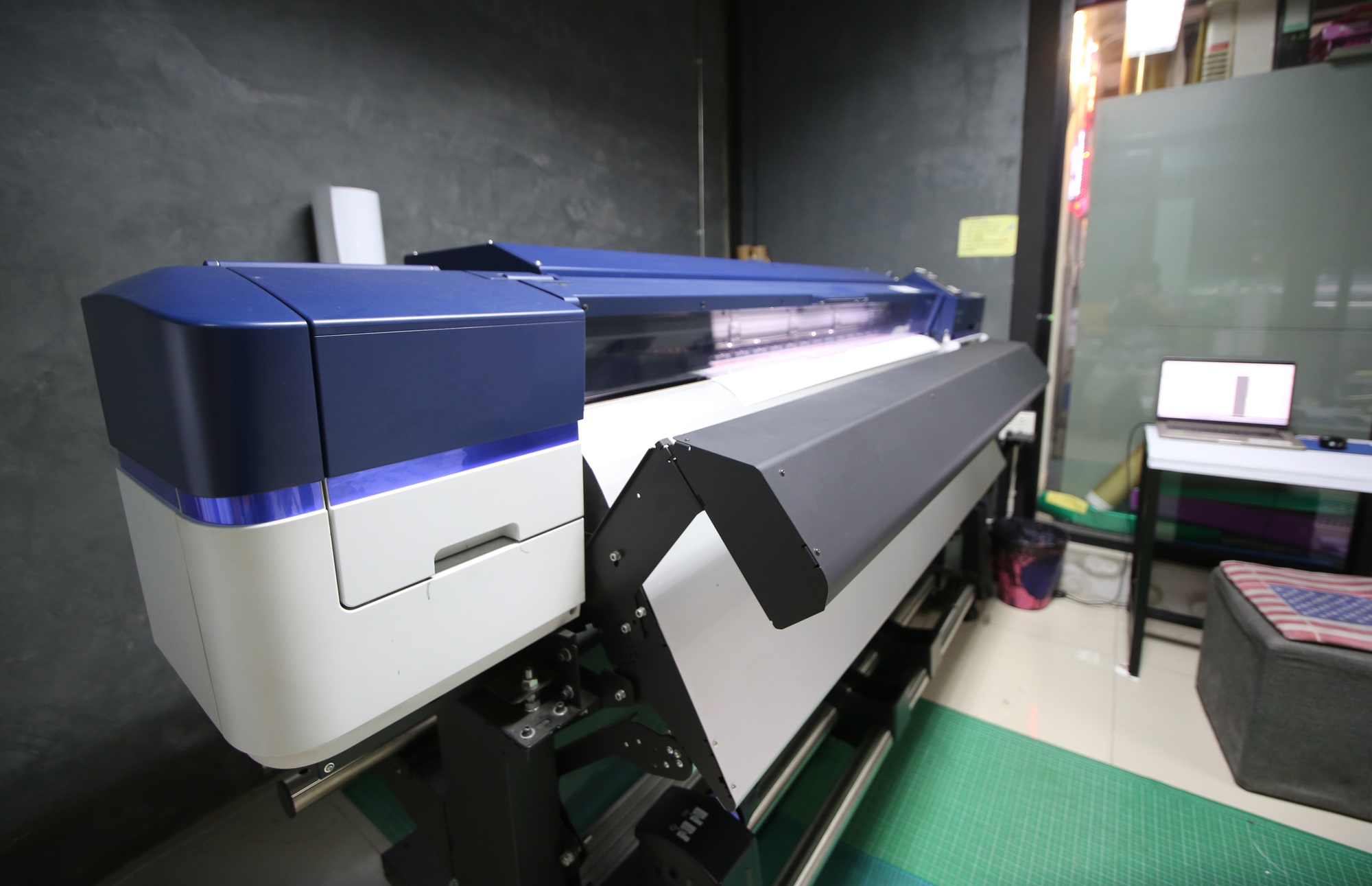Key Takeaways

- Persistence of Local Print Advertising: Despite the rise of digital marketing, local print advertising remains a powerful tool for businesses, creating lasting impressions and community connections.
- Targeted Audience Reach: Print ads effectively target specific demographics within local communities, ensuring that marketing messages resonate with the intended audience and boost engagement.
- Enhanced Brand Awareness: Tangible print materials foster stronger brand recall compared to digital alternatives, making them more effective for small business visibility.
- Variety of Formats: Local print advertising can take many forms, including newspapers, magazines, flyers, and brochures, each with unique advantages that can enhance marketing efforts.
- Effective Design and Distribution: Successful print advertising requires eye-catching designs and strategic distribution channels to maximize reach and impact within the local marketplace.
- Measuring Success: Establish clear objectives and track metrics to evaluate the effectiveness of print campaigns, allowing for informed adjustments and improved ROI.
In a world dominated by digital marketing, local print advertising still holds its ground as a powerful tool for businesses. You might be surprised to learn that tangible ads can create lasting impressions and foster community connections. Whether it’s flyers, brochures, or local newspapers, print media offers unique advantages that digital platforms can’t replicate.
As you explore the benefits of local print advertising, you’ll discover how it can enhance your brand visibility and engage your target audience. By leveraging local publications and direct mail, you can reach potential customers right in your neighborhood. Dive into the world of print advertising and unlock strategies that can elevate your business presence in the local market.
Overview of Local Print Advertising

Local print advertising remains vital for small businesses in a digital age. It creates tangible touchpoints that effectively engage your target audience. Flyers, brochures, and local newspapers serve as hands-on tools to convey your brand message and promote your services or products directly to community members.
Print advertising enhances brand visibility locally. Unlike social media, which can easily get lost in feeds, printed materials capture attention in a more permanent form. You can distribute these items at community events, local shops, or through direct mail to potential customers. This approach maximizes your chances of being noticed and remembered, fostering stronger connections with your community.
Local marketing through print ads allows for targeted outreach. You can tailor your message to resonate with specific demographics in your area. This precision ensures that your advertising dollars work efficiently, reaching audiences that reflect the customer base you aim to attract. By blending print with digital efforts, such as social media campaigns, you enhance overall marketing effectiveness.
Local print advertising provides a unique strategy for small businesses seeking to deepen roots in their communities. By utilizing various print formats, you can increase brand visibility and foster lasting customer relationships.
Benefits of Local Print Advertising

Local print advertising offers distinct advantages for small businesses focusing on connecting with their community. Understanding these benefits helps you craft effective marketing strategies.
Targeted Audience Reach
Local print advertising enables precise targeting of your audience. You can choose to advertise in local newspapers, industry magazines, or engage in direct mail campaigns. This localization ensures your message reaches specific demographics, increasing engagement and conversion rates. You can tailor your ads to resonate with the interests and needs of your community, ensuring your marketing dollars are spent efficiently.
Enhanced Brand Awareness
Print ads foster stronger brand awareness compared to digital alternatives. Studies indicate that tangible media, like brochures or flyers, create a lasting impression due to their multisensory engagement, which enhances memory recall. This strengthened brand recall positions your small business favorably against competitors. Use local print advertising in conjunction with social media strategies to maximize visibility and reinforce your brand’s presence in your target market.
Types of Local Print Advertising

Local print advertising encompasses several formats that effectively engage your target audience. Among them, newspapers, magazines, and flyers/brochures stand out as essential tools for enhancing your local marketing efforts.
Newspapers
Newspaper ads represent a traditional yet powerful form of local print advertising. These ads appear in daily or weekly newspapers, varying in size from small classified ads to large full-page formats.
- Use Case: You can reach local or regional audiences effectively. A local car dealership might promote a weekend sale through a newspaper ad, capturing attention during peak shopping periods.
- Advantages: Newspapers enjoy high circulation in local communities, earning reader trust. They serve well for timely promotions, ensuring your message reaches a broad demographic of potential customers.
Magazines
Magazine ads cater to specific audiences, appearing in general interest or niche publications.
- Use Case: Targeting certain demographics can increase the effectiveness of your marketing campaign. For instance, a health food store may advertise in a fitness magazine to directly appeal to health-conscious consumers.
- Advantages: Magazines allow for visually appealing designs and longer shelf life than newspapers. Readers often retain magazines longer, enhancing brand recall as they revisit pages multiple times.
Flyers and Brochures
Flyers and brochures offer a direct way to communicate with your audience. These print materials can be distributed at community events, local shops, or through direct mail.
- Use Case: You can promote special offers or events suited for localized outreach. For example, a new restaurant could distribute flyers announcing a grand opening to entice community members.
- Advantages: Flyers and brochures enable detailed presentation of your products or services, making them effective for generating interest and traffic to your business. You can easily customize these materials to reflect your brand’s personality and engage your audience directly.
Utilizing these various types of local print advertising can significantly boost your marketing efforts, giving your small business a competitive edge.
Best Practices for Local Print Advertising

Effective local print advertising boosts small business visibility. Your approach should emphasize design and distribution channels tailored to your unique audience.
Designing Eye-Catching Ads
Design eye-catching ads that engage your target demographic. Focus on the following principles:
- Hierarchy: Use different font sizes and colors to emphasize key messages. Important information should draw the reader’s eye first.
- Balance and Alignment: Ensure visuals and text are evenly distributed, making your ad aesthetically pleasing and easy to read.
- Color and Imagery: Select colors and images that resonate with your audience’s interests. Bright colors may stand out better, while specific images can evoke emotions relevant to your brand’s message.
An engaging design triggers interest and prompts action, making it essential for local marketing efforts.
Choosing the Right Distribution Channels
Selecting appropriate distribution channels enhances the effectiveness of your local print advertising. Consider these options:
- Local Newspapers: Advertise in community newspapers for broad reach. They are trusted sources, often seen as part of everyday life.
- Direct Mail: Use direct mail campaigns to target specific neighborhoods. Personalization can lead to higher engagement rates.
- Events and Venues: Distribute flyers and brochures at local events or popular community spots. This method ensures your ads reach engaged audiences directly.
- Industry-Specific Magazines: If available, leverage local industry magazines for targeted campaigns. Their niche audiences can drive relevant traffic to your business.
By effectively designing your ads and carefully selecting your distribution channels, you strengthen your marketing strategy and deepen community connections.
Measuring the Effectiveness of Local Print Advertising

Measuring the effectiveness of local print advertising involves key metrics and strategies that enhance your campaign’s impact. Start by setting clear objectives. Define specific goals, such as increasing brand awareness, driving foot traffic, promoting special offers, or enhancing customer engagement. Clear objectives help you measure success accurately.
Next, track print distribution. Understanding where and how your materials are distributed is crucial. Consider implementing the following strategies:
- Targeted Distribution: Focus on areas with high potential using demographic data to ensure your campaigns reach receptive audiences.
- Partnerships: Collaborate with local businesses and print shops. Such partnerships can expand your reach and create mutually beneficial promotions.
- Event Marketing: Distribute materials at local events. Engaging with the community helps you connect directly with potential customers.
- Direct Mail Campaigns: Utilize mail services for accurate tracking of distributed materials. Monitor response rates from these campaigns to assess effectiveness.
Collect feedback through surveys or customer interactions. Identify the elements that resonate most with your audience, allowing you to adjust future campaigns. Keeping a close watch on these metrics helps reinforce your local marketing efforts, ensuring a greater return on investment from your print advertising.
Conclusion

Local print advertising remains a powerful tool for your business. By connecting directly with your community through tangible materials, you can create lasting impressions that digital ads often miss. The unique advantages of print media enable you to engage your target audience effectively, enhancing brand visibility and fostering stronger relationships.
As you consider your marketing strategy, remember that blending print with digital efforts can amplify your reach. Utilize the diverse formats available to tailor your message and maximize impact. With thoughtful design and strategic distribution, local print advertising can be a game-changer for your business, driving engagement and boosting your presence in the local market. Embrace the potential of print and watch your business thrive.
Frequently Asked Questions

What is local print advertising?
Local print advertising refers to tangible marketing materials such as flyers, brochures, and newspaper ads that target specific communities. It’s designed to connect with local audiences and build brand awareness while promoting products or services in a physical format.
Why is local print advertising important for small businesses?
Local print advertising is crucial for small businesses as it fosters community connections, enhances brand visibility, and allows targeted messaging. Unlike digital ads that can quickly fade from view, print media provides a lasting impression, making it effective in driving local engagement.
How does print advertising compare to digital marketing?
Print advertising stands out by offering tangible materials that capture attention in a way digital ads often can’t. While digital marketing might reach a broader audience, print can effectively create stronger brand recall and more meaningful local connections, ensuring messages resonate with the community.
What types of local print advertising are available?
Common types include newspaper ads, industry magazines, brochures, and flyers. Each format serves unique purposes; newspapers provide broad reach, magazines cater to specific demographics, and brochures/flyers are ideal for direct promotions and events, enhancing marketing efforts.
How can businesses measure the effectiveness of print advertising?
Businesses can measure effectiveness by setting clear goals, tracking distribution methods, and collecting customer feedback. Analyzing engagement metrics, such as foot traffic or survey responses, helps refine future campaigns and improve return on investment from print advertising efforts.
Image Via Envato: damirkhabirov, stevanovicigor, zamrznutitonovi, DC_Studio, FoToArtist_1, akportfolio24, Nimfadora_Photo, wayhomestudioo



